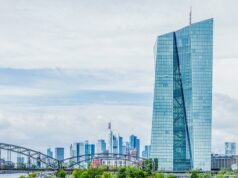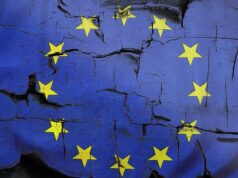The bones of the dictator should have been somewhere else. A symbolic act that costs politically nothing, Pedro Sánchez believed. Spain’s Prime Minister disgraced it.
Right at the beginning of his term, Pedro Sánchez wanted to score high publicity:
In his first TV interview in June 2017, Spain’s Socialist premier announced that he would remodel the remains of the 1975 deceased dictator Francisco Franco. Before the summer break they should be exhumed from the Valle de los Caídos, the monumental tomb of the Guadarrama Mountains 50 kilometers northwest of Madrid. But half a year later, the bones are still in the same place: buried under a simple granite slab in a rock church crowning a 155 meter high concrete cross. A few weekenders secretly make selfies. When the guard looks away, one extends his arm to the fascist salute.
Sánchez wanted to avoid such pictures with his push. As a place of pilgrimage Franco-faithful, the memorial to many as the most visible sign of a still inadequate reclamation of almost forty-year dictatorship.
Franco himself had commissioned the construction – as a memorial to his victory in the Civil War (1936-1939). Inside the Basilica, which has been blown up by the rock, Marian bands pay homage to the patronesses of the Spanish armies. In the side chapels of the tunnel vault rest the remains of 30,000 civil war victims; Supporters of the putschist as well as republican soldiers. This is an expression of the character of the basilica as a „Memorial of Reconciliation,“ the official booklet says. There could be no talk of reconciliation at the 1959 inauguration.
Actually everything seemed clear
Supporters of the Spanish Republic were prosecuted under Franco. Among other things, the basilica was built by republican forced laborers, and the remnants of the republican dead had been carted there without permission from their families. Today, historians say, it is above all the presence of the dictator himself that makes it difficult to read other than the glorification of his regime. As early as 2011, a commission set up by Sánchez’s party colleague José-Luis Rodríguez Zapatero called for the reburial, with an exhibition designed to provide the necessary context for the historical classification of the structure.
For both, there seemed to be a broad consensus last. In May 2017, the Spanish parliament asked the then-reigning government under Mariano Rajoy to implement the opinion, with only the conservative PP and a few regional parties abstaining. Probably because of this, Sánchez’s intervention appeared as an opportune prelude to his term of office: a symbolic act with low political costs – and a wide-spread effect. But the prime minister had made the bill without the seven grandchildren of the dictator – and without the Benedictine Order, which has been charged since 1958 with the pastoral care of the tomb. Both block Sánchez’s prestigious project, so far successful.
www.zeit.de



